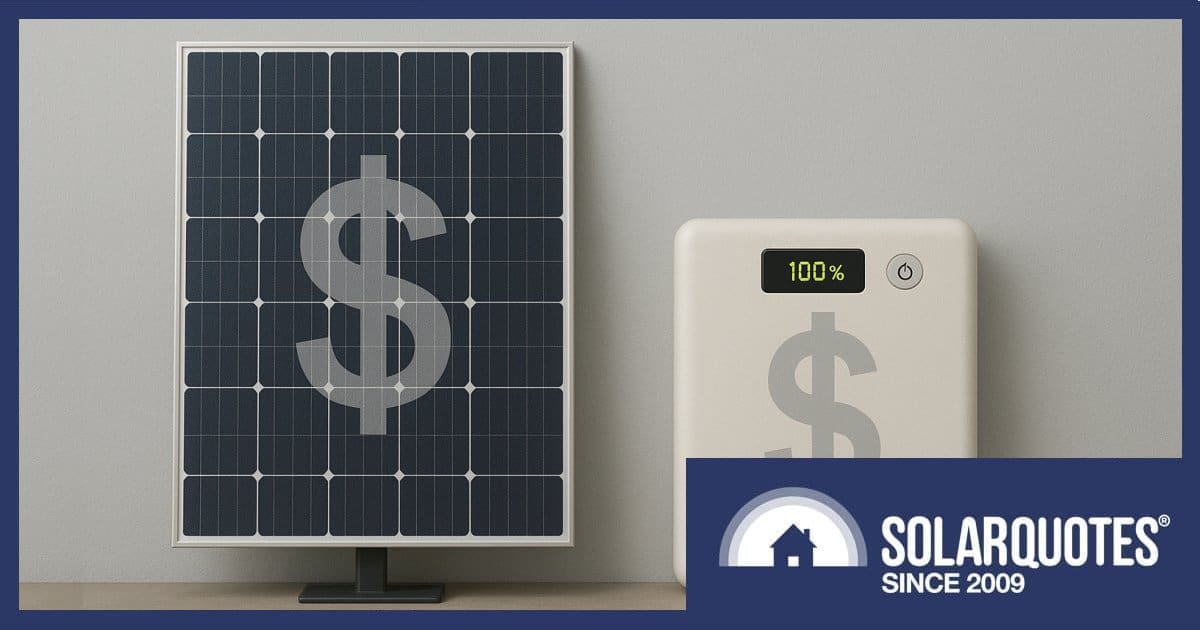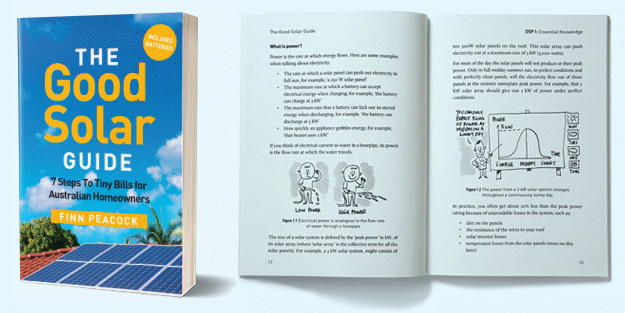
Solar power and home battery systems will likely cost Australians more from January 2026 due to rebate reductions. But other factors beyond our shores could put added upward pressure on local system prices.
What’s Happening With Solar And Battery Prices?
Scheduled rebate reductions in Australia for solar and battery systems come into play on January 1, 2026. Added to that, China’s solar panel manufacturers are reportedly warning international buyers that prices will be going up during this quarter and throughout 2026 due to Chinese government intervention, and battery prices will also head north.
Let’s look at the local rebate situation in 2026 first first.
It’s around this time of the year we usually start seeing advertising screaming that solar rebates are reducing soon, in order to drum up sales. But it may be somewhat muted this year due to the huge demand triggered by the Cheaper Home Batteries program, with many solar installers’ books still full with battery installations.
Solar Panel Rebate Reduction On January 1, 2026
Australia’s solar panel rebate operates under the nation’s Small-scale Renewable Energy Scheme (SRES) and is based on Small-scale Technology Certificates (STCs). These are virtual bits of paper that have a value fluctuating with market conditions; although their value has been pretty consistent throughout this year. The value of the STCs (minus admin fees) is offered as an up-front discount on the cost of a system.
Given how the SRES operates, eligible solar systems are entitled to fewer certificates each year. The reduction occurs on the 1st of January every year until it goes to zero in 2031.
As an example, a 10kW solar panel system installed this year in Brisbane1 is entitled to 82 STCs. Based on an estimated STC value of $36 after fees (and admin fees can vary), that works out to $2,952 off the up-front cost of a solar power system. But the same system installed on January 1, 2026 will only be entitled to 69 STC’s. That’s ~$2,484; around $468 less.
Home Battery Rebate Decrease On January 1, 2026
Likewise, the more recently launched Cheaper Home Batteries program also operates under the SRES and with STCs in a similar way; reducing each year on January 1 at this point.
For example, an eligible 13 kWh battery is entitled to 120 STCs currently. The value of these STCs post-admin fees is slightly higher — generally around $37 each — representing a rebate in this instance of around $4,440. On January 1, 2026 that same battery will be entitled to 109 STC’s, or an up-front discount of around $4,033 — around $407 less.
Between the solar panel and the battery rebate reductions, that’s around $875 less from January 2026 for a 10 kW solar system with a 13 kWh battery.
You can get an idea of the potential financial impact for other system sizes using the SolarQuotes solar STC calculator and battery rebate calculator; both of which are very quick and easy to use.
There’s another factor beyond our shores that could also put upward pressure on local prices.
Chinese Government Market Intervention
An ongoing solar panel pricing war, particularly in the solar panel supply chain, has seen the Chinese Government step in to try and restore order.
Polysilicon consolidation and supply production cuts
The production of polysilicon — a crucial material in the manufacture of conventional solar cells — has ballooned over the past couple of years, resulting in massive oversupply and low prices.
According to research firm Wood Mackenzie:
“New government guidelines have restricted expansion and mandated utilization cuts, which have reduced production rates to 55-70% among leading producers.”
This graph from Bernreuter Research tells the story — from a low this year in mid-June of around US$4 per kilogram for N-type polysilicon material out of China, to a cost of approximately US$6.35/kg last week.
However, Bernreuter also notes while stricter requirements could reportedly reduce China’s polysilicon production capacity from 3.5 million metric tonnes (MT) currently by 31.4% to 2.4 million MT, it considers this estimate as premature and unlikely to materialise. It also notes a new energy consumption standard for polysilicon plants will only become effective in late 2026.
Export rebate cancellation
But this quarter, the Chinese government has also dropped a rebate that was previously applied to exports of panels and energy storage systems says Wood Mackenzie.
“With China supplying over 80% of global solar modules and 90% of lithium iron phosphate battery packs used in energy storage, this policy change will directly impact global benchmark pricing.”
The situation in China is probably not a sky-is-falling scenario for Australian solar buyers keeping in mind the current low cost of solar systems and decreasing home battery prices to this point, but combined with rebate reductions any impact won’t be welcomed.
So, it seems we could be moving from a phase when solar panels in particular are unsustainably cheap to a new phase where they are just very cheap.
Don’t Rush A System Purchase
Paying more for anything may be an unpleasant prospect, but buying something that isn’t fit for purpose or shoddily installed even more so. And given the level of competition in the Australian home solar and battery market, it’s not clear just how much of net impact all of the above will have.
With some (predominantly battery) installers fully booked through to year’s end, it’s a good time for prospective buyers to take a breath and the time to research their options before the calendar flips over to 2026 to ensure they get the best bang for rebate (and their own) bucks when ultimately making a purchase decision.
SolarQuotes’ popular 101 guides will tell you everything you need to know about understanding, buying and owning solar power and battery systems.
Footnotes
- STC entitlements for solar PV vary according to region, or “zones”. For batteries, they remain the same. ↩

 RSS - Posts
RSS - Posts



Every day I’ve been glad that I targeted efficiency first in my system set up, retrofitting the house (windows and insulation) and re-designing our energy use to better target daytime activity, when the solar is producing.
With that a single Powerwall 2 has proved more than sufficient, even in a large house with 5 people, and an EV, in one of the coldest places in Australia. heated using energy from the same panels.
Many friends are having mega batteries installed, and tiny FOMO feelings emerged. But I did the sums, and the ROI was laughable for us.
Be curious to know what you had to spend to achieve this. $A 100k (inc car) ?
Around that, the windows ended up being expensive but the house is large and old, and needed better windows of some kind anyway. So it was a two birds with one stone thing.
That reduction in credits is still close to a 5% price increase on current out of pocket costs.
Not the end of the world, but it isn’t to be sneezed at either. Twice the inflation rate (depending on who you believe), more if the base prices also rise.
My battery supplier solar battery group is still waiting to get my rebate for 2half months . Why does it take so long . Its solar battery group in Dandenong vic .
I’m sure the not to distant mass job losses will have the retailers beginning mass discounts… then it’s time to pounce!